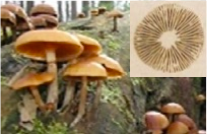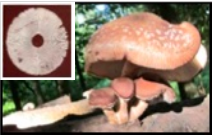Harvesting Shiitake
EXPERT TIPS: Harvest Timing
“On the cooler ends of the forcing season I generally allow 11 to 12 days from forcing to picking ... even more in the fall when I really seem to push that last forcing.”
– Steve Sierigk, Hawk Meadow Farm
“I usually time my fruitings 10 days in advance of when I plan to sell them. If there are harvestable shrooms beforehand, I’ll put them in the fridge for a day or so, collect more, and then deliver when the logs are fully harvested. “
- Nick Laskovski, Dana Forest Farm
EXPERT TIPS: Picking Techniques
“I pick by hand ... using both hands. I grab stem as close to base as I can and twist. I also notice a distinct difference between log species on how shiitakes pick ... some come off quite easily and some are more difficult ... so if I feel much resistance I often make sure to pull in a direction that goes against the grain of the wood ... this often minimizes bark tearing and makes a cleaner pick.“
– Steve Sierigk, Hawk Meadow Farm
“I used to cut the mushrooms off - until weekly harvesting began taking too long (one at time with one hand working the knife). I now harvest ‘two handed’ and carefully twist the stem to remove it cleanly without tearing the bark. Getting a knife behind every stem is not so easy when the mushrooms are in clusters. And watching highly experienced growers (even in Japan) work has shown me that cutting every one off is just too slow/tedious.”
- Bob Wagner, North Woods Shiitake
EXPERT TIPS: Thrips
“Thrips ... tiny and fast-moving. The ubiquitous thrips are a nuisance but seem to cause little physical damage. After picking shiitake we gently blow on the gills and the thrips rise to the surface; gently tap the shiitake to send the thrips elsewhere, deal with as you will! Thrips seem to be worst in the warmer temperatures of summer.”
– Steve Sierigk, Hawk Meadow Farm
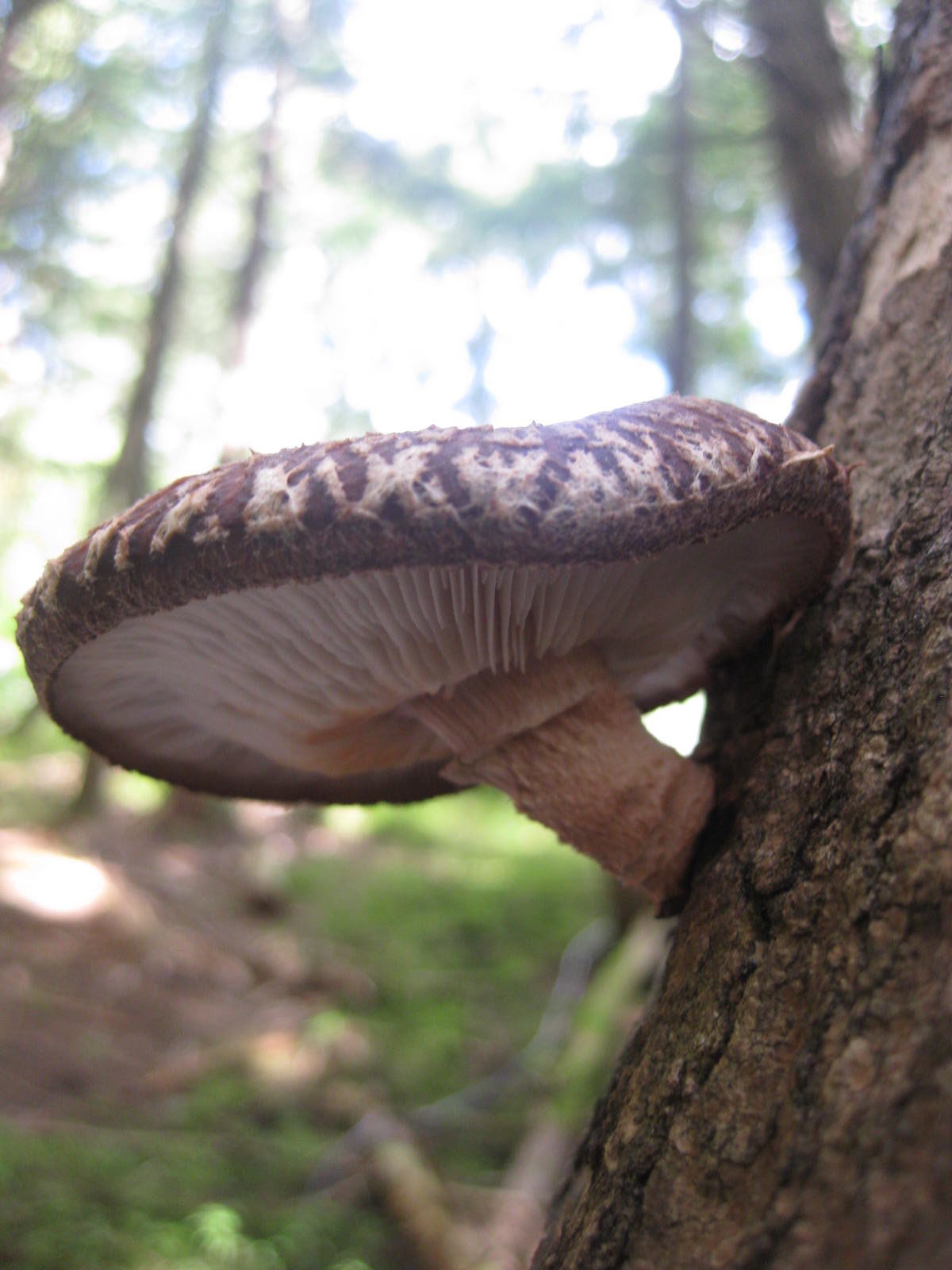
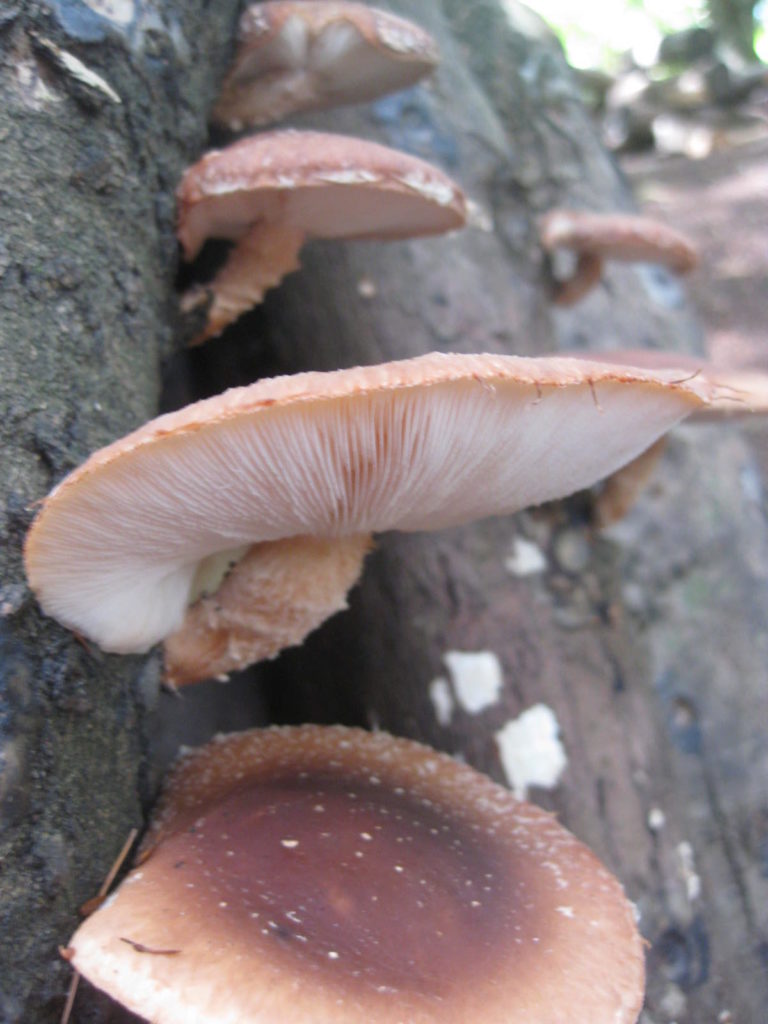
When to Harvest
Shiitake mushrooms are usually ready to be harvested 7 to 10 days after shocking although colder temperatures will slow their growth. It is not the size of the mushroom that determines when it is picked, but its growth progress. Gills should be visible and the outer edge of the mushroom should be slightly curled under, but not tightly so. If the edge has flattened out, the mushroom is slightly over-ripe, but still edible.
Shiitakes are more marketable when the cap is still curled and somewhat closed. Wide, flattened mushroom caps indicate over-maturity and will not be as valuable as the fresher looking forms. Many growers choose to dry overgrown and damaged mushrooms, and report that pound for pound at fresh stage, dried shiitakes sell for just as much money as fresh. The advantage of dried mushrooms is they do not have to be aesthetically perfect, although it is suggested, especially for mushrooms sold at retail, that they be harvested at the right time and free of slug damage or other major defects.
For more information regarding how to dry the mushrooms, see the section on processing.
How much to Expect
Mushroom production for a typical log will peak the second and third years. At this time it is reasonable to expect 0.25 to 0.5 pound of mushrooms per log or higher per flush, with the goal of doing two shockings per season. Over the course of five years, you can expect to produce approximately 3 to 4 pounds of fresh mushrooms per log.
Removing and Cleaning Shiitake Mushrooms
When harvesting shiitake mushrooms, the goal is to efficiently remove the mushrooms without damaging the bark. Most experienced growers simply twist and pull the mushrooms off the log using their hands. See sidebar for more information. However, if you don’t feel comfortable with this method, you can use either a curved pair of scissors or a knife in order to ensure a clean cut on the stem. Either way, growers make the point to “not worry” because a thoroughly colonized and well-managed log should be fine with minor pieces of bark removed.
Gently brush off any dirt or debris, without washing the mushroom under water, and place each mushroom into an open basket, paper sack or other vented container.
Thrips
Thrips, in the order Thysanoptera, are common to Northeast mushroom laying yards. These are tiny, slender black insects, about one-eighth inch long, that feed on mushroom spores. They can be found crawling in the gills before harvest. While cumbersome to deal with, they are often not a cause for concern, because they feed on the spores and not the mushroom fruiting body.
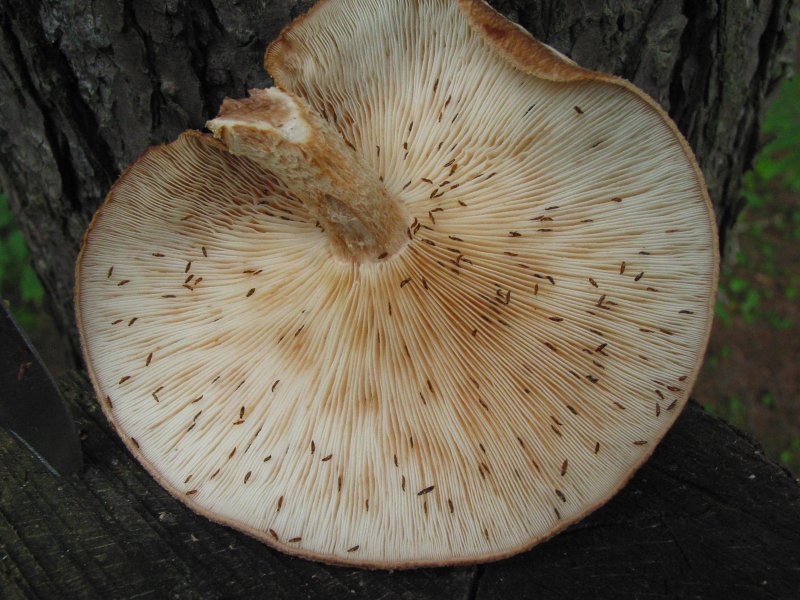
A few light taps on the top of the cap is often enough to disturb the thrips so they dislodge and fall out. If the problem is more widespread, mushrooms can be harvested in bulk and blown, under light pressure, by an air compressor.
Deer
Some deer may also acquire a taste for shiitake mushrooms. Spraying deer repellent around your laying yard should discourage the deer. Deer have not generally been considered a serious pest of shiitake, except in isolated incidents. One of the most extreme of these was reported recently by an experienced Vermont grower. Over a single night, what must have been a herd of deer ate hundreds of shiitake mushrooms from scores of logs, costing the grower hundreds of dollars.
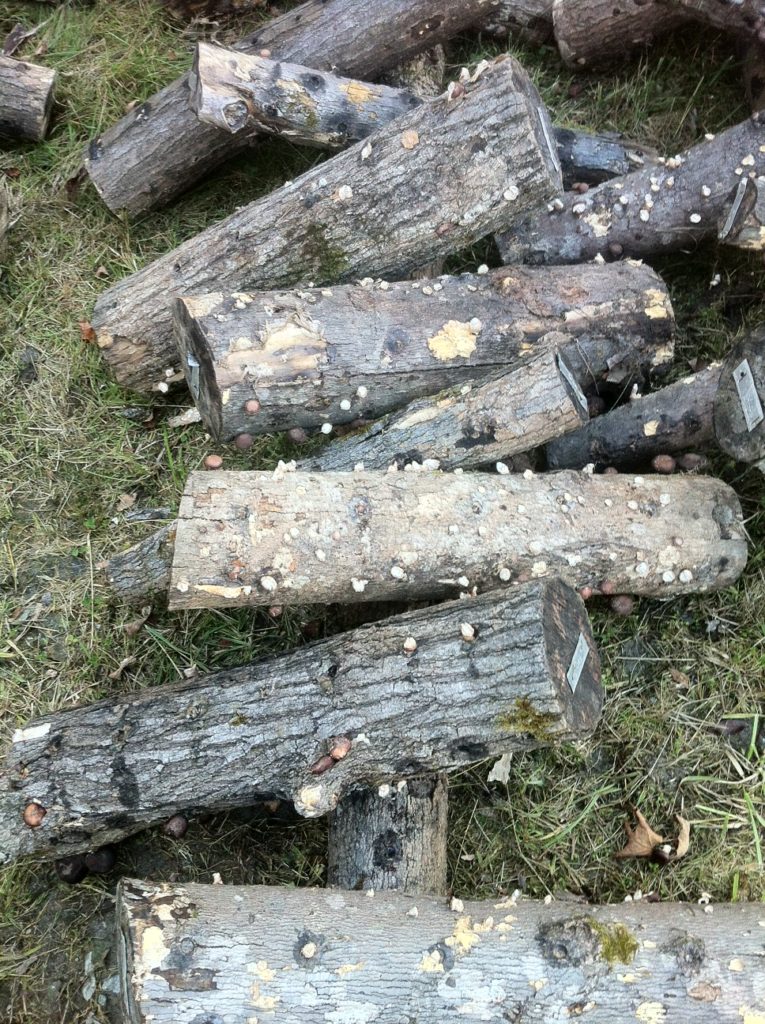
Cracking Caps
Cracking in shiitake caps occurs due to the varying growing conditions, typically dry conditions, after the shiitake pins. In Asian cultures, dried shiitake cracked caps are highly valued (and priced/graded higher) because their flavor is considered more intense. These shiitake are often called “flower” shiitake as the cracking pattern resembles a blooming flower. Many growers in Asia deliberately try to induce this condi- tion (high humidity and temperature during day and cold and dry at night) to achieve a higher yield of flower shiitake.
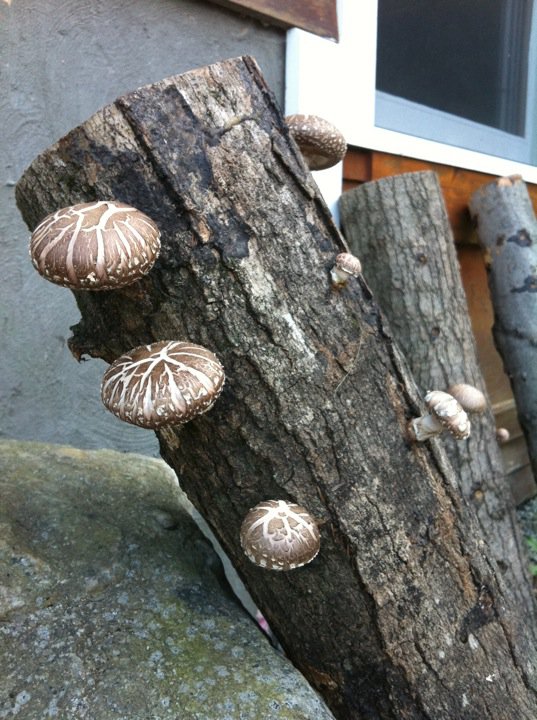
Large Stems and Small Caps
Shiitake generally develop large stems and small caps when there is not enough fresh air exchange and sunlight. To alleviate the problem, introduce more airflow and sunlight into your laying yard and fruiting structures.
EXPERT TIPS: Overgrown Shiitake
We typically eat overgrown shiitake mushrooms grilled with melted cheese and garlic as a sandwich ... we call these ‘grillers’. Some of the restaurant accounts have said that they would not mind the overgrown ones if they are not in bad shape ... I would discount these a wee bit.”
–Steve Sierigk, Hawk Meadow Farm
Overgrown Shiitake
When shiitakes become overgrown, the caps become wide and flattened. These mushrooms, although still edible, will not be as valuable as the fresher looking forms. Many growers choose to dry overgrown and damaged mushrooms.
In the fall and spring, logs have a strong urge to produce shiitakes due to natural environmental triggers, so it is good to walk through stacks every few days to look for them. We also recommend keeping your stacks loose enough that you can collect naturally fruiting mushrooms as they arise.
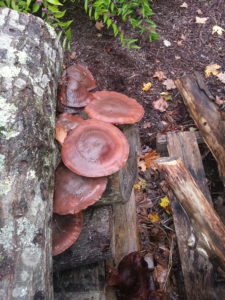
Shiitake Look-a-Likes
It is critical for every grower to be certain that what is being picked and sold or eaten is actually Shiitake. Absolute care should be taken to only pick mushrooms from logs that you have inoculated and to make a positive identification for every shiitake mushroom that comes off your log. If you are ever unsure about whether it is shiitake, consult a university mycologist or other mushroom expert.
Gallerina is a small brown mushroom that grows on wood. It has a brown spore print, and is usually found on very decayed wood. It is very poisonous. It is pictured below on the left below. A shiitake mushroom and its white spore print is pictured to the right below.
